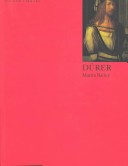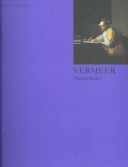Colour Library
2 total works
Albrecht Durer (1471-1528) was an artist of the Northern Renaissance, remarkable for the range and versatility of his work. His woodcuts and engravings made him famous throughout Europe and he is still one of the most brilliant printmakers of all time. As an oil painter , Durer was equally successful at religious and secular subjects, producing magnificent altarpieces and powerful portraits. His drawings and watercolours are impressive for the diversity of their subject matter and the varied media in which they were produced. The son of a Hungarian goldsmith, Durer grew up in Nuremberg, a town half-way between the Netherlands and Italy, and he found inspiration in the work of painters of both these major artistic centres of his time. But rather dm simply imitating what others were doing, Durer was very much an innovator; he is the first artist who is known to have painted a self-portrait and to have done a landscape painting of a specific scene. This book contains some of his best loved works, including The Young Hare and Praying Hands.
Johannes Vermeer of Delft (1632-75), known as 'the painter of light', was one of the most talented artists of the Dutch Golden Age. Only 36 of his paintings survive and little is known about his life, yet he is one of the most popular of the Old Masters. His tranquil and meticulously painted interiors, of such subjects as women writing or reading love letters, and men and women drinking together or playing musical instruments, are acutely observed and have an enduring appeal, both for their subject-matter and for the artist's breathtaking technique and sensuous handling of paint.
Vermeer was raised in an inn, and he followed in his father's footsteps, becoming an innkeeper and an art dealer, as well as an artist. He qualified as a master painter in the Delft artists' Guild in 1653 and remained in the town all his life. He was greatly influenced by the artistic milieu, particularly by the painters Carel Fabritius, Leonaert Bramer, Pieter de Hooch and Gerard Dou. This book illustrates in colour all his extant works, including the magnificant townscape, View of Delft, and the allegory, The Art of Painting; with 12 telling details, it provides an excellent overview of his work and technique.
Vermeer was raised in an inn, and he followed in his father's footsteps, becoming an innkeeper and an art dealer, as well as an artist. He qualified as a master painter in the Delft artists' Guild in 1653 and remained in the town all his life. He was greatly influenced by the artistic milieu, particularly by the painters Carel Fabritius, Leonaert Bramer, Pieter de Hooch and Gerard Dou. This book illustrates in colour all his extant works, including the magnificant townscape, View of Delft, and the allegory, The Art of Painting; with 12 telling details, it provides an excellent overview of his work and technique.

